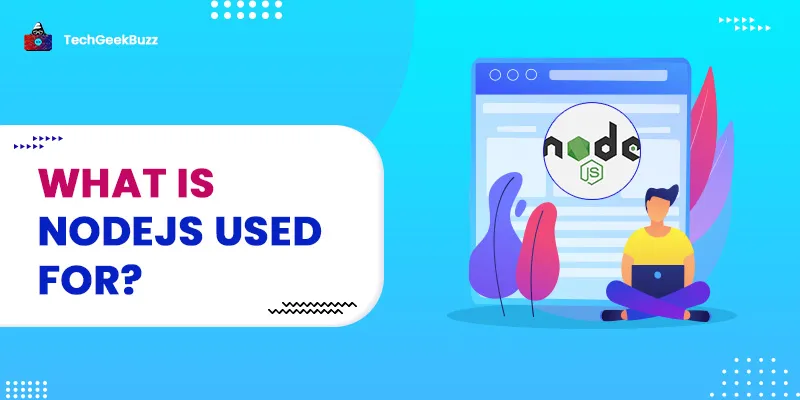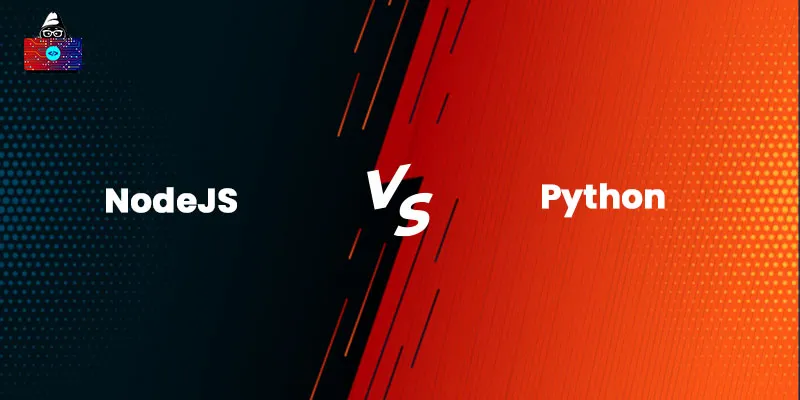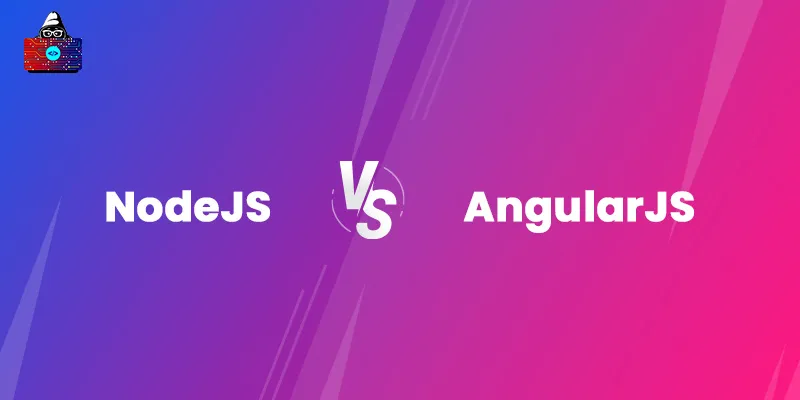If you are in the web development industry, you might have definitely come across or possess hands-on experience working with Node.js. This technology has made it possible for web developers to leverage JavaScript for back-end development .
Ryan Dahl, in 2009, launched the most basic version of Node.js. Since then, this technology has emerged as one of the most popular ones for the back-end development of different types of applications.
Many leading tech giants, from LinkedIn to Netflix and PayPal, leverage Node.js to build high-quality, scalable applications. According to the reports , 43% of developers use this technology for developing enterprise applications, while 85% of developers use it for web applications.
This article aims at explaining to you what different types of applications you can develop using this back-end technology, Node.js. But before that, let us have an in-depth look at what exactly Node.js is and why it is used for building scalable applications.
So, we shall move further into the details without any delay.
What is Node.js?
It is an open-source, cross-platform JavaScript runtime environment. It is a lightweight, fast, and scalable back-end runtime environment that runs on top of JavaScript or the V8 engine . Developers can use it to execute JavaScript code outside of a browser.
Additionally, programmers may utilize this environment to write server-side scripts and command-line utilities. Server-side scripting includes executing scripts server-side to create dynamic web page content even before sending that web page to users’ browsers.
As a result, “ JavaScript Everywhere” is a paradigm that Node.js follows. This means that by using a single language, JavaScript , client-side (front-end) as well as server-side (back-end) development is possible.
In addition to supporting asynchronous I/O, this runtime environment has an event-driven design . This architectural pattern emphasizes optimizing throughput and scalability in real-time and web applications with multiple I/O operations.
Here are two important facts about Node.js that you must know:
- It is not any back-end language or framework; instead, it is a runtime environment for JavaScript.
- Many people believe that this technology is only utilized for creating servers. However, this is untrue because you can use it for client-side as well as server-side development.
Why Use Node.js to build Scalable Network Applications?
This runtime environment was primarily designed for creating high-quality and scalable network applications. Here are some of its significant features that help us understand why it is used for building scalable network applications:
-
V8 Engine
Developed by the Chromium Project, V8 is an open-source JavaScript engine for Google Chrome and Chromium browsers. This engine is capable of converting JavaScript code directly into the native machine code without the need to execute it. This, in turn, results in amazing runtime performance. Along with Node.js, other runtime environments that run on top of this engine are Deno and Qt Quick.
-
Asynchronous
Being asynchronous, this runtime environment is capable of handling multiple requests without any dependencies between them. This asynchronous feature helps in boosting the efficiency and throughput of applications. It is also referred to as a non-blocking code execution design pattern.
Unfortunately, PHP does not work like this. It can only handle one request at once; it cannot handle several requests simultaneously.
-
Single-Threaded
This runtime environment has the ability to manage multiple concurrent requests without creating several threads because it uses the single-threaded event loop model. So, there is no need to worry about errors rising due to incorrect thread synchronization, as such errors are extremely challenging to troubleshoot. In addition, this single-threaded model reduces the performance hit of thread context switching.
-
Unified API
Node.js has adopted multiple popular back-end development patterns. As a consequence, it is simple to integrate a JSON-compatible browser or database with Node.js, which results in a single JS development stack.
-
Data Streams
Applications developed using Node.js do not buffer any data. It is because of the Stream module, which is an interface available to deal with streaming data. This module makes it painless to create objects that implement the stream interface.
Node.js is well suited for developing scalable network applications as it comes with the ability to produce the output in chunks.
What is Node.js Used for?
This runtime environment has proved to be beneficial in developing applications that leverage JavaScript for both front and backend development. According to Stack Overflow Developer Survey 2022 , Node.js is the top technology used by half of the respondents, as shown in the image below:
Now that you know what Node.js is and how popular it is. Let us now dive into the list of types of applications that you can develop using this widely-used runtime environment.
-
Real-Time Chat Applications
A real-time application (RTA) is a type of application that operates within the given time frame that users sense as immediate or close to it. Real-time chat applications are those that enable users to communicate live with others through the transmission of text, audio, or video. Instant Messaging ( IM ) or Internet Relay Chat ( IRC ) technologies form the basis for real-time chat applications.
Whether it is a social networking site or a commercial website, you can use Node.js to develop any real-time chat application. The event-driven and asynchronous features of this runtime environment make it possible to handle heavy I/O operations. It helps developers build high-performance applications that every user seeks from contemporary real-time chat applications.
Moreover, the Socket.io library enables event-based, real-time, and bidirectional communication between a user’s browser and the server. With just around 30 lines of code, developers can group-chat applications using this library.
-
Streaming Applications
A streaming application is a kind of software program that installs only the essential components or portions of an application on demand rather than installing them on the device in advance. Such applications are the form of on-demand software distribution.
Once you download content from streaming applications, you can view them even if you are offline. The best example of streaming applications developed using Node.js is Netflix.
The Stream API and asynchronous non-blocking I/O of Node.js make it the most popular choice for developing streaming applications. This environment comes with a thorough interface of readable and writable streams that are easy to control and process efficiently.
-
Browser Games
A browser game is basically a video game that is played inside a web browser using an internet connection. Another popular type of application developing Node.js is a browser game. However, it utilizes other technologies, such as HTML and Socket.io, to develop single as well as multiplayer games that you can play from a browser, not requiring you to install any third-party plugins.
Moreover, this environment makes the development of multiplayer browser games painless by providing multiple tools. Among these tools, one is EventEmitter, which raises and handles custom events.
A single-page application (SPA) is a kind of web application that dynamically updates the current web page with new content from the web server . Such applications do not involve reloading web pages. Only at the first user request a browser loads a web page, and on subsequent user requests, only the new resources get loaded and added to the web page dynamically.
The best example of SPA is Gmail. The ability of Node.js to handle heavy input/output workloads and asynchronous calls makes it a perfect choice for developing SPAs.
Moreover, this runtime environment has the ability to delay multiple client requests at once, thanks to its event loop feature. As a result, it guarantees a smooth transition and constant updates to the data.
The fact that Node.js uses and is built in JavaScript makes it simple to utilize it for developing SPAs because developers can use the same language and data structure for both front-end and back-end development.
-
Command-Line Applications
Another type of application that you can develop using Node.js is a command-line application. It is a sort of application that has a text-based interface and lacks a graphical user interface (GUI). Many organizations opt for customized command-line tools to accomplish various tasks quickly and efficiently.
Creating command-line tools with Node.js is simple, efficient, and quick, thanks to various libraries available, such as commander, yargs, and oclif. Also, this runtime environment encourages developers with no proficiency in back-end languages to use JavaScript.
-
Embedded Systems
An embedded system is a microcontroller- or microprocessor-based system, which is an amalgamation of hardware and software to perform a particular or dedicated function within larger systems.
Doesn’t it sound strange to use JavaScript for creating microcontroller-based applications? It absolutely does! However, hardware programming is emerging as one of the most popular use cases of Node.js.
More interestingly, you can now install and run Node.js on low-cost, energy-efficient microcontroller boards, thanks to its version, low.js.
-
IoT Applications
IoT is among the most breakthrough technologies, along with artificial intelligence and machine learning . It is a network of different physical devices, such as sensors, beacons, software, and other technologies, that can exchange information over the internet.
A single IoT system consists of multiple devices. The ability of Node.js to process multiple requests at the same time and the event-driven architecture that facilitates asynchronous data processing make it a better choice for building IoT applications. In addition, this environment acts as an application layer between IoT devices and databases to store information generated by those devices.
Conclusion
Here ends our discussion on the applications of Node.js. It is a versatile, scalable, and fast runtime environment running on top of the V8 engine. Many leading tech gains, including Netflix, Uber, GoDaddy, LinkedIn, and PayPal, have implemented this runtime environment.
With multiple use cases, from real-time chat applications to IoT applications, Node.js has gained massive popularity in the web development industry and will tend to gain more attention in the future.
People are also reading:





Leave a Comment on this Post